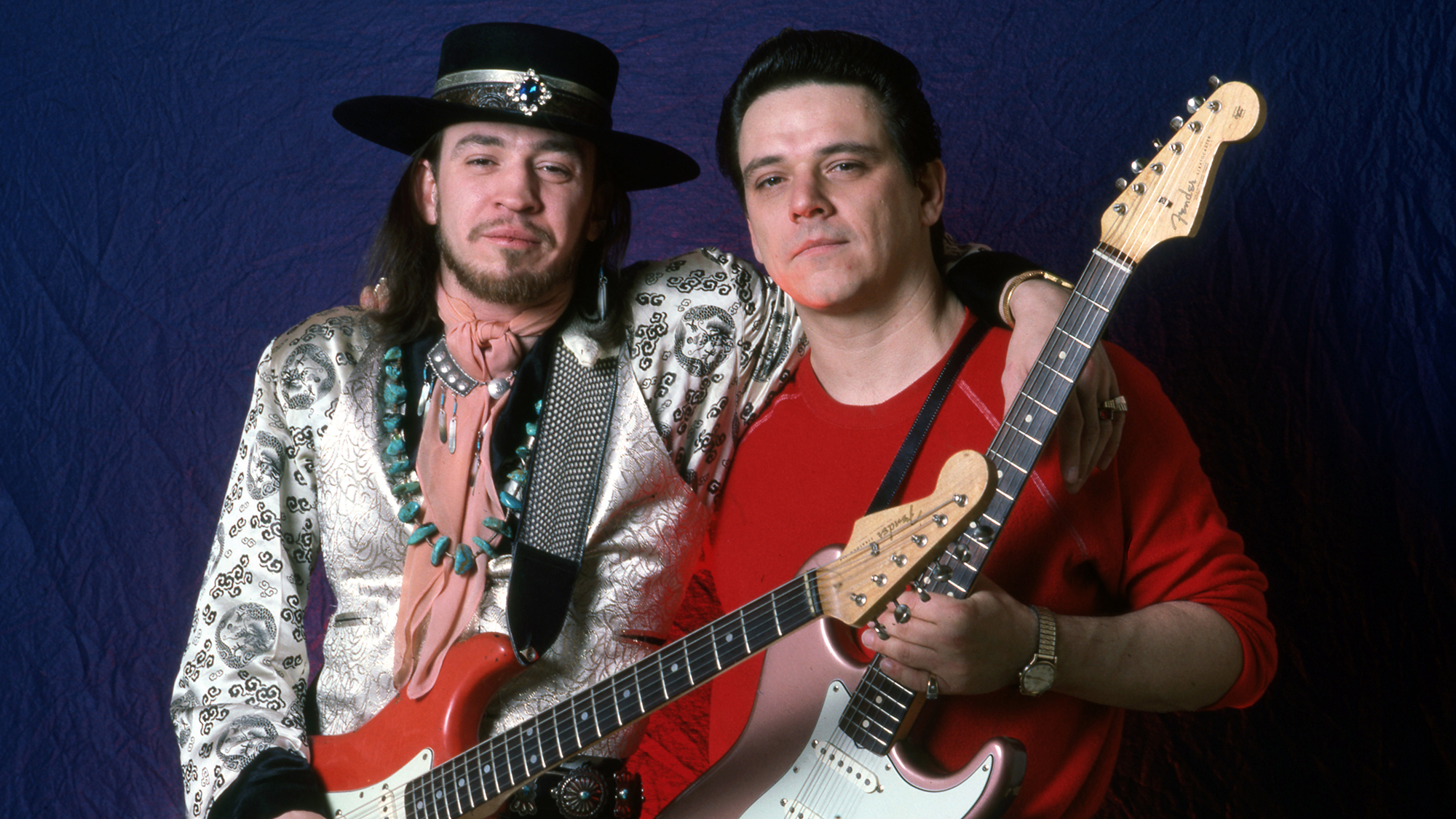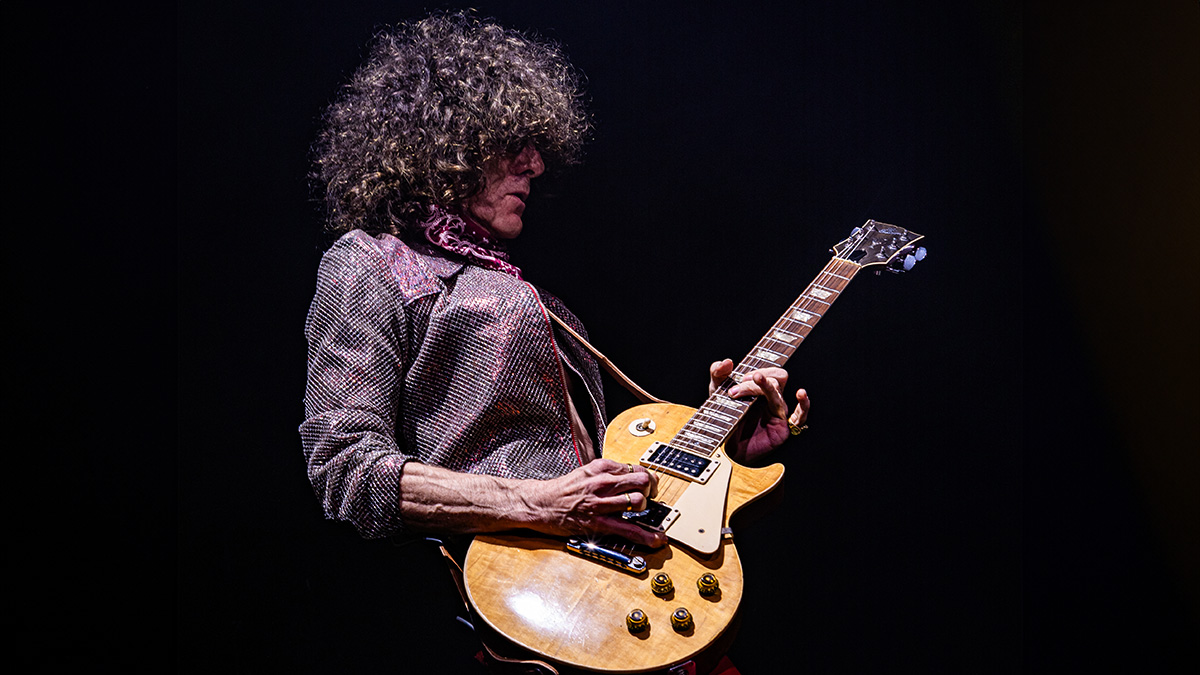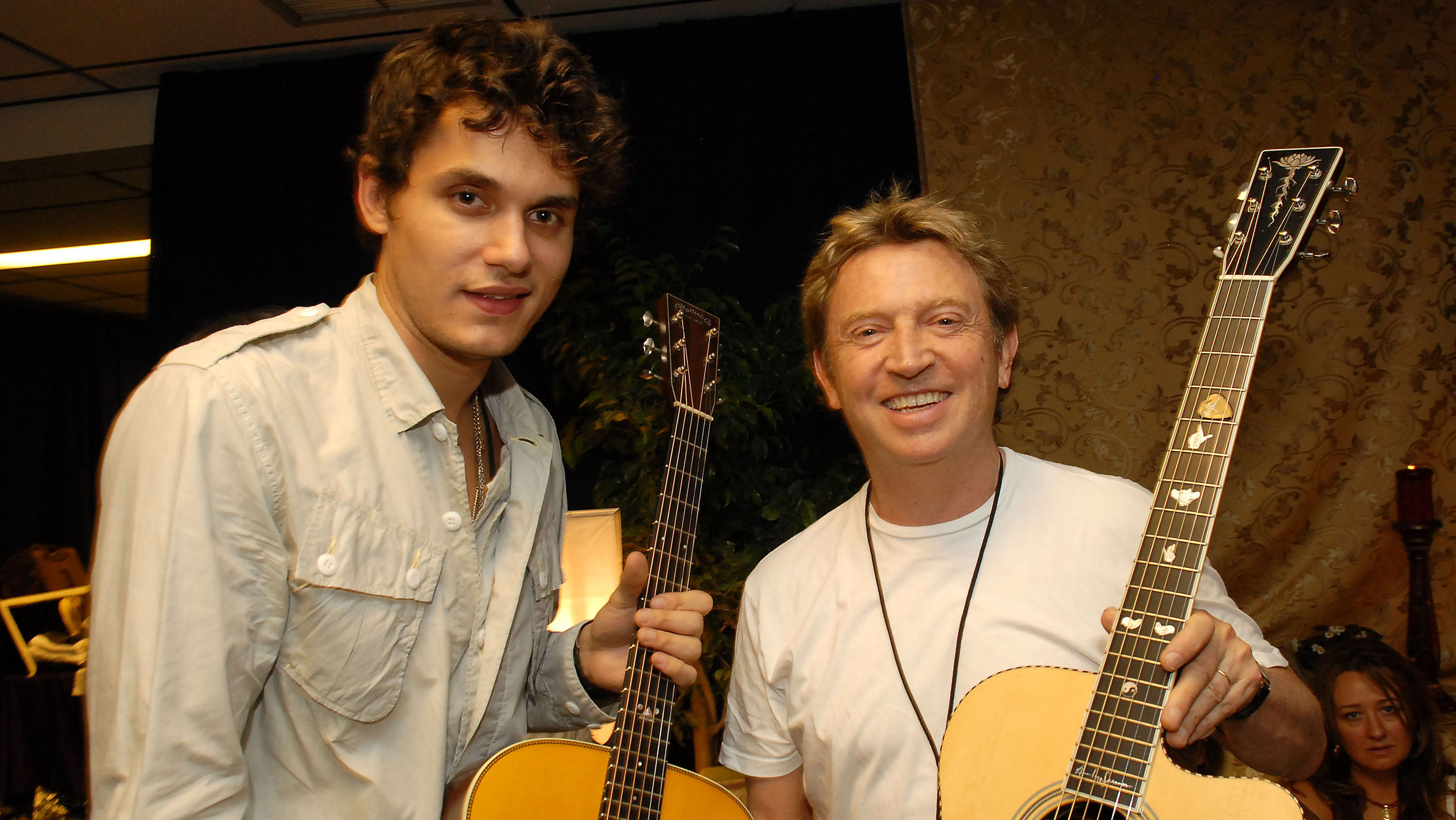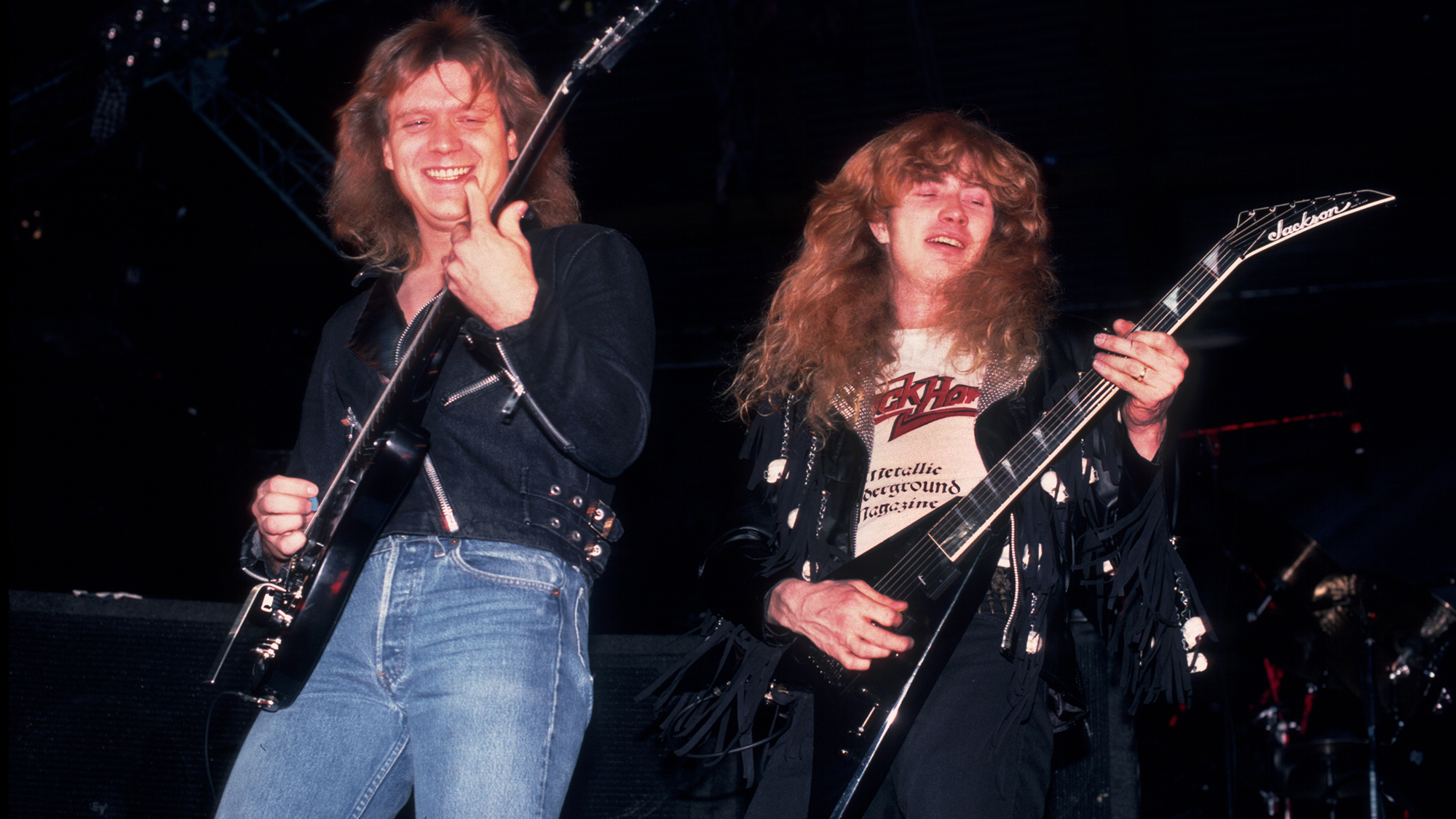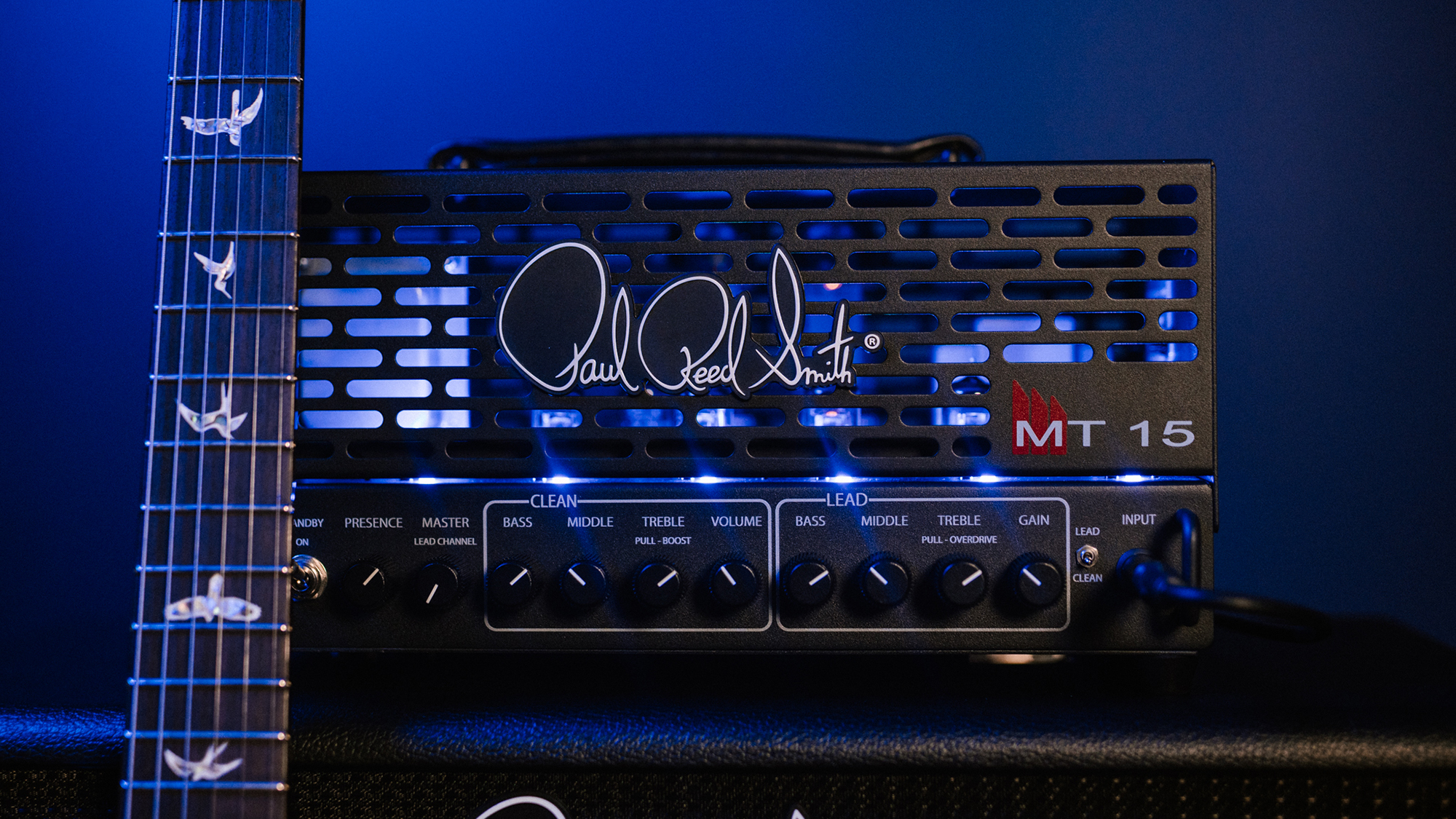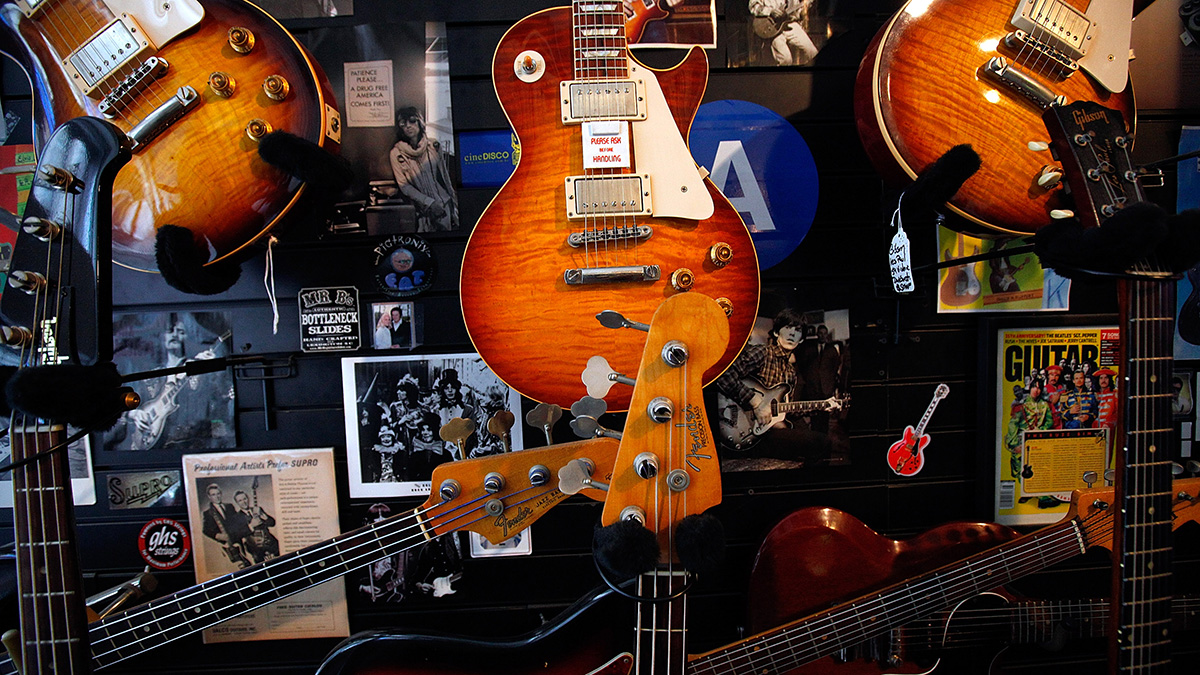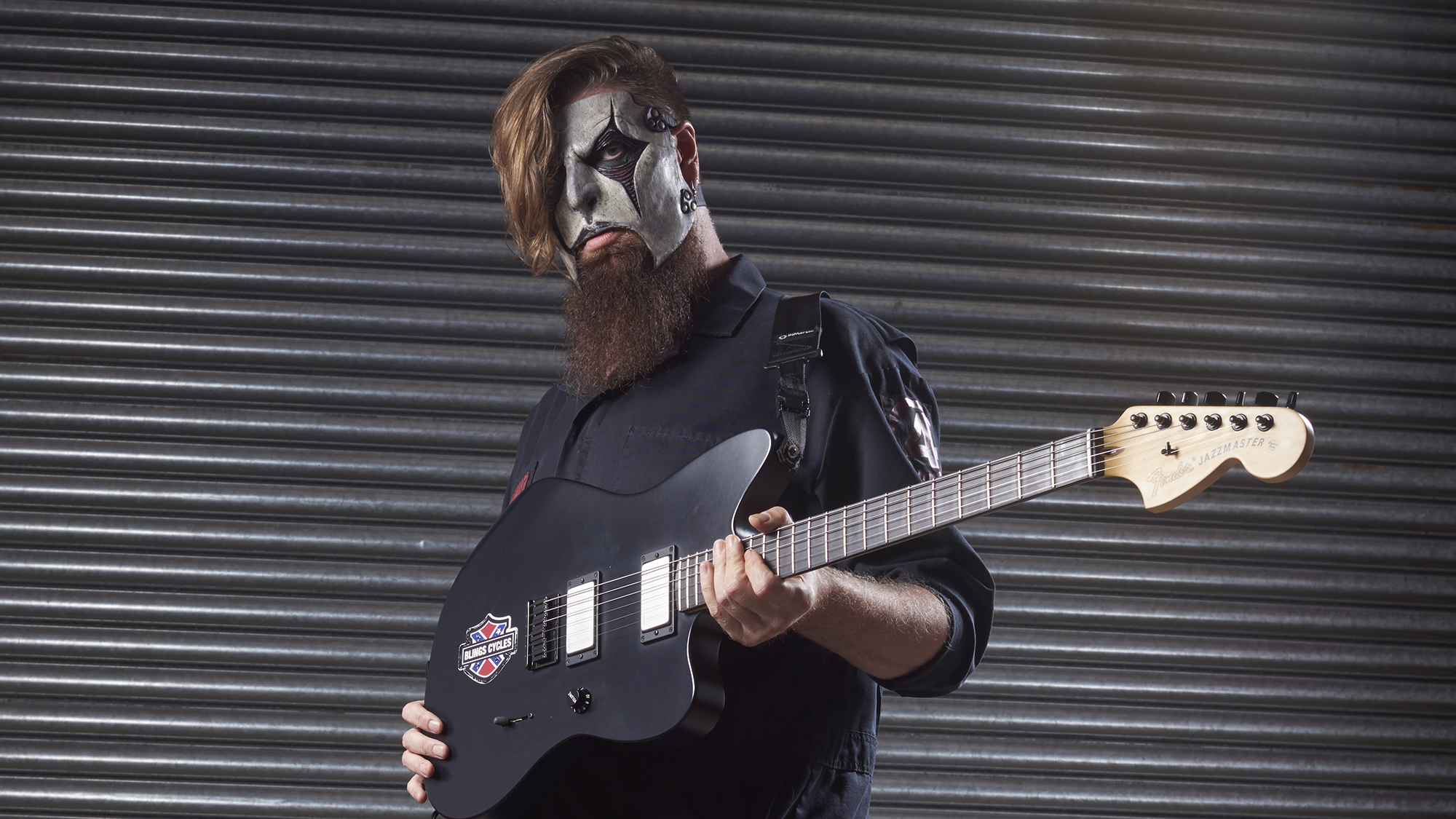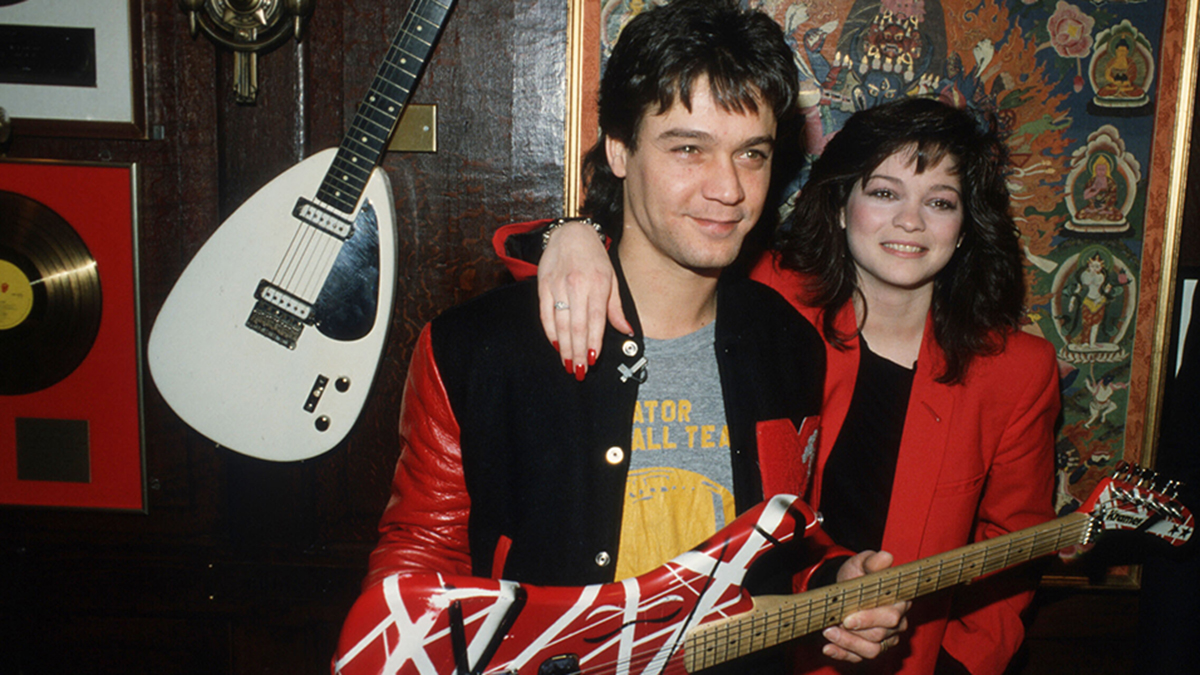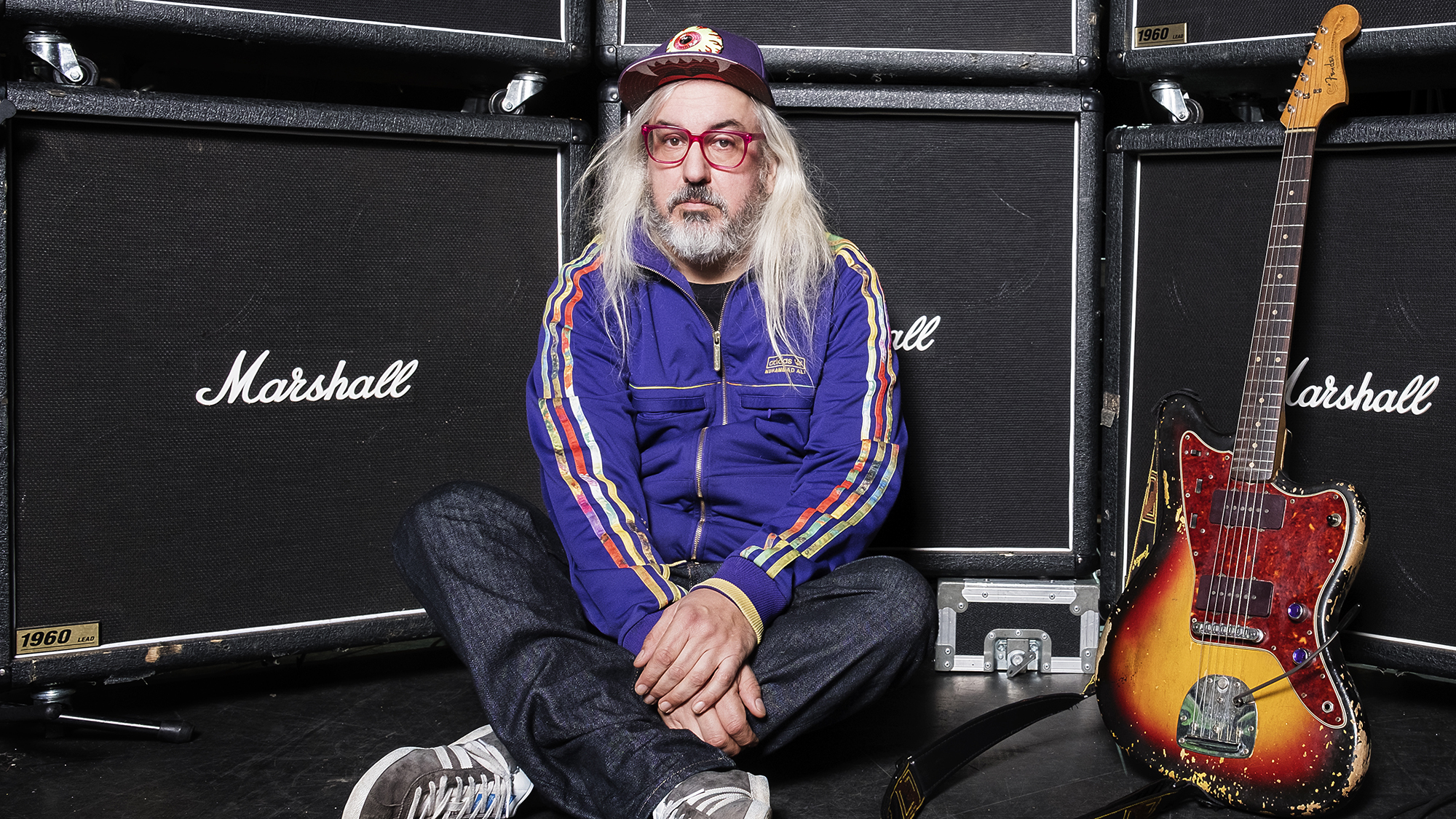The Grateful Dead's 50 best live performances
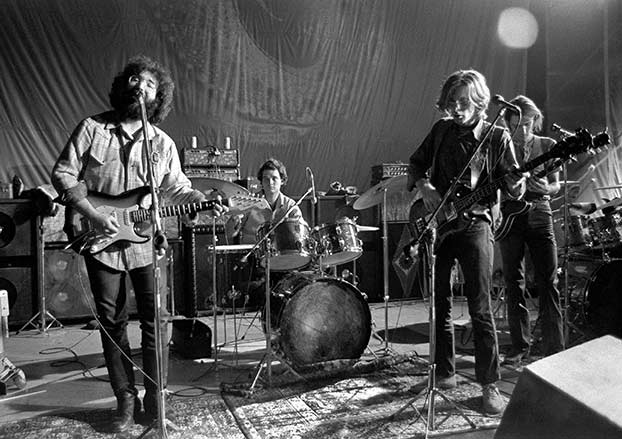
Two years removed from the Grateful Dead’s 50th anniversary celebration and the triumphant “Fare Thee Well” stadium concerts in their native San Francisco Bay Area and in Chicago, the surprising, resurgent Deadmania has not subsided.
Indeed, the events of that year seem to have both rekindled the ardor for the group’s music in many Deadheads who dropped off the psychedelic bus following Jerry Garcia’s death in the summer of 1995, and also brought in many new fans who never had a chance to see the band but are attracted by the Dead’s amazingly diverse and appealing songbook, and the colorful, upbeat, Sixties glow that will forever surround the group.
The ongoing success of the many Phil Lesh & Friends lineups and, more recently, Dead and Company, featuring newish Dead convert John Mayer (playing with Bob Weir and Grateful Dead drummers Bill Kreutzmann and Mickey Hart), show that the Dead’s legacy is very much intact and that the music is continuing to evolve.
The individual musicians in the Grateful Dead were never poll winners in music magazines, yet you would be hard-pressed to find a rock group with a core so adept at playing so many different styles—and always in an improvisational context.
They drew from electric and country blues, oldtime and bluegrass, jazz, rock and roll, soul, funk, Indian, New Orleans R&B, electronic and classical music; nothing was off-limits. Each of the musicians brought in different influences and forged his individual style. Nobody sounded quite like Garcia (often imitated, never duplicated), and the same could be said of Bob Weir, whose designation as a “rhythm guitarist” is hopelessly inadequate given the sophistication and depth of his playing.
Their styles couldn’t be more different, but they were completely sympathetic players, tightly enmeshed and equally in sync with bassist Lesh (another utterly unconventional player) and the drummers.
They brought it all together in a unique mélange that took them from the fire-breathing psychedelia of the late Sixties, to the Dead Americana of Workingman’s Dead and American Beauty, and far beyond. Along the way they built the most loyal fan base the music world had ever seen
Get The Pick Newsletter
All the latest guitar news, interviews, lessons, reviews, deals and more, direct to your inbox!
What follows is a selection of the best live versions of 50 songs by the Grateful Dead (and a few cover tunes) spanning their history.
Why live performances? Because that’s where the magic happened with this band. Everyone, including band members, will tell you that studio albums never quite captured the Dead’s mystical X-factor. So, live recordings it is. Fortunately, the Dead had the largest archive of live tapes of any band ever, so there is much to draw from. The difficulty, of course, is narrowing it down to just 50. After all, hardcore Deadheads would argue that 50 versions of “Dark Star”—each different as can be—could be a list in itself.
And the fact is, this does go beyond 50: As you’ll see, for a number of tunes, there are second and third picks based on eras—songs such as “Dark Star,” “Playing in the Band,” “The Other One” and a few others changed radically from one period to the next (influenced by the change in keyboardists and other factors), so versions from each epoch get a nod.
As for the criteria for the choice of songs—most are ones that, over time, were most variable night to night either because of the jamming in them or the intensity of the vocal delivery, or some other elevating force. So why not have “Sugar Magnolia” here? Or “Deal”? Or “Touch of Gray”? Surely there are multiple versions of each that fit those categories. Of course there are, and so it is with nearly any tune you’d care to mention that is not here. Such are the cruel realities of list-making.
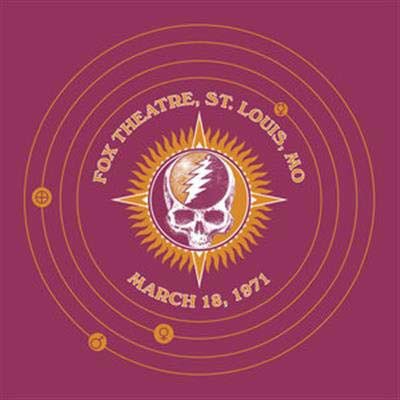
A couple of final notes: The songs are listed in chronological order by performance date. For the main picks, we’ve listed where they can be found on Grateful Dead–sanctioned releases (where applicable), most of which can be accessed through Apple Music and Spotify. But here’s the cool news: There’s a fantastic web site called headyversion.com that is the ultimate resource for listening to the “best” versions of Grateful Dead songs.
Not only do they appear in order of popularity according to hundreds of folks who have weighed in on their favorite versions of just about every song in the Dead cannon—280 versions of “Eyes of the World,” 27 versions of “Liberty,” 59 versions of “Jackaroe,” etc.—but the site also provides direct links to archive.org’s immense vault of Dead performances, so you can hear them all in just a couple of mouse-clicks.
Of course, there is no true consensus on any of this, but it is fair to say that there is widespread agreement that certain versions of certain songs would probably make most discerning Deadheads’ lists. Similarly there is general agreement on the Dead’s peak performance periods: 1968–1974, 1977, 1981–'82, 1988–'90; you’ll find a heavy concentration of Seventies performances here. In the end, though, opinions about “best” anything are always going to be completely subjective and also probably change over time.
50. “Victim or the Crime”
March 21, 1990; Copps Coliseum, Hamilton, Ontario
Call it jagged, gnarly, noisy or unpleasant, the fact is this dissonant late Eighties Weir song was a darkly powerful force to be reckoned with, and almost featured a harrowing jam, as its ascending lines crashed and clashed. This first-set version shows all its bludgeoning brute force (and sophistication), then dissolves into Garcia’s late-Eighties ballad tour de force, “Standing on the Moon”—which, truthfully, deserves to be on this list, too, so listen to both! Available on the Spring 1990 (The Other One) box.
49. “Foolish Heart”
July 19, 1989; Alpine Valley Music Theatre, East Troy, Wisconsin
Introduced two days after “Victim” in 1988, this melodic Hunter-Garcia number (occasionally paired with “Victim”) provided a bouncy contrast, somewhat in the tradition of “Franklin’s Tower.” This version, as presented as a bonus track on the remastered Built to Last CD, is mixed so that every instrument is clear and loud—you can really feast on Weir’s imaginative rhythm lines and Brent’s synth washes. And this is easily Garcia’s best-ever vocal on the song.
48. “The Music Never Stopped”
July 17, 1989; Alpine Valley Music Theatre, East Troy, Wisconsin
The best Eighties versions of this Weir tune, also from 1975’s Blues for Allah, have a ragged majesty and intensity that is unmatched by earlier ones. The song part is fairly similar one to the next, but the two jams at the end are where the fireworks occur. Chosen by Phil for his Fallout from the Phil Zone compilation.
47. “Dear Mr. Fantasy”
July 2, 1989; Sullivan Stadium, Foxboro, Massachusetts
From its introduction in the summer of 1984 until Brent’s demise in summer 1990, this relatively rare Traffic cover was a real crowd favorite. Brent would sing the first verse alone, Garcia would go wild between verses, and then sing the second verse as a duet, followed by more fiery leads, and in some cases—as in this incendiary version from 1989 (one of the Dead’s best years), go into the “Na-na-na” coda of “Hey Jude,” with Brent singing “Mr. Fantasy” in between the “na-nas.” Truly electric; Jerry goes off!
46. “Shakedown Street”
June 30, 1985; Merriweather Post Pavilion, Columbia, Maryland
This song was Garcia’s great contribution to late Seventies funk, and this colossal version has been the deserving winner of every poll on the subject. The interplay between Garcia (again with the envelope-wah) and Weir (who artfully employs a phase-pedal wah and octave divider in the middle of the jam) is deliciously rhythmic, and Brent adds much with his keyboards as well. If spacey/strange is more your thing, look no further than this Seventies pick: Egypt 9-16-78 (no third verse or vocal coda, but jamming galore).
45. “Cassidy”
March 28, 1985; Nassau Coliseum, Uniondale, New York
First on Weir’s solo Ace album in 1972, but not played regularly until 1976, this is another one that fully matured in the Brent era, thanks to his solid duet vocals and the more variegated jam near the end. This one hits all its marks beautifully, including a nice “landing” after the jam. Look for the “SteveSW” soundboard recording on archive.org.
44. “Uncle John’s Band”
October 12, 1984; Augusta Civic Center, Maine
Speedy and adventurous, this one has a searing middle jam and then a really long ride before the final vocal reprise—which doesn’t materialize! Instead, the boys drift into an unconnected spacey jam, then “Drums,” “Space,” a fantastic “Playing in the Band” reprise, and then back to the “Uncle John’s” vocal reprise; stunning! Available on the 30 Trips Around the Sun box. For an acoustic rendering closer to the Workingman’s Dead version, check out Harpur College 5-2-70.
43. “Lost Sailor” > “Saint of Circumstance”
October 10, 1982; Frost Amphitheatre, Stanford University, Palo Alto, California
These two Weir-written nuggets, which date back to the summer of ’79 and were paired until mid 1986, show two sides of Bob’s writing. “Lost Sailor” is drifty and floaty, with a slightly odd structure (that works!); and “Saint of Circumstance” is a riff-heavy and ultimately anthemic rocker, which also has some unpredictable components. From December ’86 on, “Saint” appeared alone; usually not quite as potent as it was with the then-departed “Sailor.” (Still, check out this excellent Hornsby-era solo “Saint” pick: Giants Stadium 6-17-91.)

42. “Feel Like a Stranger”
August 10, 1982; Fieldhouse, University of Iowa, Iowa City, Iowa
When this wonderful Weir funk number—introduced in 1979, less than a year after “Shakedown”— appeared as an opener, it promised a “long, long, crazy, crazy night!” and laid the groundwork for exactly that. As with “Shakedown,” its success hinged on the meshing of different rhythmic lines from everyone in the band, with Jerry’s clucking envelope-wah dancing above Bob’s slashing chords.
41. “The Wheel”
December 14, 1980; Long Beach Arena, California
What a great moment it was at any show when the first golden notes of “The Wheel” would emerge, float into the air, and point the way to that rousing sing-along. It was best in the early Eighties, once Brent solidified the harmonies that were often rough in the late Seventies, and Garcia took more time getting into and out of the song. This one comes out of a fantastic “Estimated Prophet” and quickly rolls up to cruising speed and becomes very powerful; and the post-song jam is a thing of beauty, with Weir on tasteful background slide for some of it, before it eases into “Drums” (featuring Brazilian jazzers Flora Purim and Airto).
40. “Jack Straw”
January 11, 1979; Nassau Coliseum, Uniondale, New York
Overall, my preference is for Brent-era versions, but there are many, many great ones from 1972 to 1979, and I have to concur with popular opinion that this one from the close of the Keith and Donna [Godchaux, singer] era smokes from beginning (“We used to play for acid/Now we play for Clive”) to the blistering ending jam. One of my longtime favorite Eighties versions is from Oakland Stadium 7-24-87, found on View from the Vault IV.
39. “Stella Blue”
October 21, 1978; Winterland Ballroom, San Francisco
It could be argued that this heavy, affecting ballad, introduced in the summer of 1972, is the single most perfect work that Garcia and [lyricist] Robert Hunter ever wrote, its power never diminishing through the years. This rightly revered version is, alas, cut near the end on the soundboard recording, but when it was officially released on Road Trips Vol. 1 No. 4, a patch from an audience-made recording was added, and it’s still the best there is.
38. “Estimated Prophet”
July 8, 1978; Red Rocks Amphitheatre, Morrison, Colorado
Year after year one of the most dependable tunes in the Dead’s second sets, Weir’s moody reggae number, with Garcia employing a wah-ish envelope filter, was played at most shows in ’77-’78 and was common for the rest of their history. The “song” part was reliable over time; it’s what happened in the jam that followed that Deadheads lived for. Here, it drifts evenly for a while, then picks up steam and rides high, before settling back down and eventually chiming into “The Other One.” Available on Red Rocks: 7/8/78.
Brent-era pick: Oakland 12-26-79 (major “clam” notwithstanding).
Nineties pick: Nassau 3-29-90, with [saxophonist] Branford Marsalis.
37. “Wharf Rat”
April 22, 1978; Nashville Municipal Auditorium, Tennessee
I’ve rarely encountered a “Wharf Rat” I didn’t love—which is good, because they played it a lot. Though I generally prefer the harmony vocals on the bridge in the Brent-era, the late Seventies versions have a distinctive haunting quality and some crushingly powerful jams. Here, the harmonies are fine, Garcia’s lead vocals are deep, and his playing outrageous and spectacular on the two concluding jams. Available on Dave’s Picks Volume 15.
36. “Black Peter”
October 29, 1977; Evans Field House, Northern Illinois University, DeKalb, Illinois
Dark, passionately sung, with a wonderful, if brief, slide guitar solo, and then a completely rip-roaring finale that keeps on building to a sustained climax before it lurches into “Sugar Magnolia.” Look for the soundboard recording on archive.org.
35. “Terrapin Station”
September 3, 1977; Raceway Park, Englishtown, New Jersey
Introduced in March ’77, this multi-layered Hunter-Garcia epic was always solid during its first year, with this version—played as the encore of what to this point was their biggest show as a headliner—notable for both its precision and power; just about perfect. It combines a folk sensibility with its famous baroque-ish contrapuntal coda and crunching rock power. Available on Dick’s Picks Vol. 15.
34. “Mississippi Half-Step Uptown Toodleoo”
September 3, 1977; Raceway Park, Englishtown, New Jersey
This perky little number took the Dead’s Americana thrust in a slightly new direction, with its nod to old-time jazz, as well as country flavors. It always built to a couple of nice peaks—the first instrumental and then the vocal coda (“Across the Rio Grande-o…”) and ending solo. This is another winner from the dynamite Englishtown show. Available on Dicks Pick’s Vol. 15.
33-32. “Help on the Way” > “Slipknot!” > “Franklin’s Tower”
June 9, 1977; Winterland Ballroom, San Francisco
This powerful and diverse triumvirate had three distinct incarnations: ’75–’77, ’83–’85, and ’89–’95, while the bouncy “Franklin’s Tower” also enjoyed solo spins during the in-between periods. This titanic 31-minute marvel from ’77 crackles with electricity, with a booming “Help,” an intricate then relentlessly building “Slipknot!” jam, all resolved with a triumphal “Franklin’s Tower.” Available on Winterland June 1977: The Complete Recordings.
Eighties pick: Santa Fe 9-10-83 (“Slipknot!”).
Nineties pick: RFK Stadium 6-14-91 (with Bruce Hornsby and MIDI Jerry) “Franklin’s Tower” alone: Cape Cod 10-27-79.
31. “Sugaree”
May 22, 1977; The Sporatorium, Pembroke Pines, Florida
Again, lots of great choices from 1977. This one was vaultkeeper Dick Latvala’s favorite, a big reason he chose the show as Dick’s Picks Vol. 3, and it’s hard to argue against its greatness. It’s big, loping and jammed to the max between verses with everything from fast, intricate runs to powerful fanning to gentle guitar etchings. As the saying goes in the Dead universe: “All killer, no filler!”
30. “Comes a Time”
May 9, 1977; War Memorial, Buffalo, New York
The voters at headyversion.com get it right again. With this song, it’s all about Garcia’s vocal delivery and swelling, crying solo after the verses, and this one delivers in spades! My favorites are from ’76-’77, with Donna on sweet harmony vocals and Keith adding little piano touches to the spare arrangement. Available on Dick’s Picks Vol. 29.
It was still powerful when it was revived in the mid Eighties, and from that era I’d recommend checking out Richmond Coliseum 11-1-85, which has a fragile but committed Jerry really baring his soul. It almost falls apart, but the recovery is great!
29-28. “Scarlet Begonias” > “Fire on the Mountain”
May 8, 1977; Barton Hall, Cornell University, Ithaca, New York
After a couple of years of “Scarlet” enlivening any set it appeared in, in March 1977 it was paired with the new “Fire on the Mountain” to become perhaps the most popular combo of songs in Dead history—it was played around 240 times. My own preferences run toward the driving, high-energy Brent-era versions ’79–’90 (I loved what Brent’s B-3 and backup vocals added), but it’s hard to argue with the primacy of Cornell ’77, which has the unbeatable ending “Fire on the Mountain” jam (but the best-ever “Scarlet” is the amazing Giants Stadium 9-2-78 version).
Eighties pick: Atlanta 11-30-80.
Nineties pick: Hamilton 4-22-90 (tight, great MIDI Jerry). “Scarlet” alone pick: Fresno 7-19-74.
27. “Morning Dew”
May 8, 1977; Barton Hall, Cornell University, Ithaca, NY
This song was great in all eras, always a highlight when it appeared. The subtext of the Bonnie Dobson–penned folk ballad could not be more dire—the last man and woman on earth after a nuclear holocaust!—but in the Dead’s hands it was both delicate and filled with heavy pathos. At this show, it closes an incredible second set, with Garcia and company reducing the place to rubble with the ending buildup—the mark of a truly great “Dew.” A pre-hiatus version to check out is Winterland (San Francisco) 10-18-74.
From the Eighties, it’s hard to top Augusta, Maine 10-12-84.
26. “Crazy Fingers”
June 9, 1976; Boston Music Hall, Boston, Massachusetts
Played briefly in the mid Seventies and then from ’82 on, the ’76 versions capture the spirit of the jewel-like Blues for Allah version, with this one a particularly satisfying rendition, with its breezy, reggae lightness. Available on Road Trips Vol. 4 No. 5.
Eighties pick: Frost Amphitheatre 10-10-82.
25. “Eyes of the World”
August 6, 1974; Roosevelt Stadium, Jersey City, NJ
So many contenders! Even though this is another tune that was great in every period, only versions from ’73 and ’74 included the amazing, still-unnamed jam that would materialize after a few minutes after the final verse (and following Phil’s dependably monstrous bass solo), in which the group bopped through an intricate series of key and tempo changes, jazzy intricate unison lines that were miles away from the song, and then soared on the “Eyes” groove for several minutes.
I love the relaxed-but-still intense vibe of Seventies “Eyes”; by the early Eighties the tempo had increased and the tune sometimes lacked that liquid-sunshine flow the song begs for. This one, clocking in at 19 minutes, is just about flawless in every respect. Available on Dick’s Picks Vol. 31.
Eighties pick: Greek Theatre 5-13-83; Seventies tempo, lots of jamming, nice work by Brent; look for the soundboard version on archive.org.
Nineties pick: Nassau Coliseum 3-27-90; gotta give some love to the magnificent first show where saxophonist Branford Marsalis sat in with the Dead, and fit in perfectly!
24-23. “China Cat Sunflower” > “I Know You Rider”
June 26, 1974; Providence Civic Center, Providence, Rhode Island
This was a tough one. The version 10 days earlier from Des Moines, Iowa, (6-16-74) has a slightly better “China Cat” and a cooler between-songs jam, but Providence has a fantastic long intro to “China Cat” and better “I Know You Rider,” so we’re going with that choice. Both are wonderful (as are most of these loping ’74s), filled with excellent interplay. Available on on Dick's Picks Vol. 12.
Eighties pick: Madison Square Garden, New York; 3-9-81. I really love all the peppy [keyboardist] Brent Mydland–era “China-Riders,” too. This one is over-the-top spectacular, with super high-energy jamming all the way through its generous length; one of several highlights in an amazing show from an underrated year.
Nineties pick: Shoreline Amphitheatre, Mountain View, California; 6-16-90. Strong late Brent-era version with hot extended jam (including MIDI flights) between tunes and solid “Rider.” Available on View from the Vault III.
22. “Truckin’ ”
May 19, 1974; Portland Memorial Coliseum, Oregon
Another nearly impossible choice, with more than 500 versions to pick from! Again, we lean early: ’72–’74, when Keith was in the band, Phil was at his most prominent musically, and the jams following the song typically opened up the widest and wildest. Like on this one—talk about the Group Mind in action! This one bounces and grooves forward with so much vigor and purpose before it falls into a funky jam and eventually ends up at “Not Fade Away.”
21. “Here Comes Sunshine”
November 30, 1973; Boston Music Hall, Boston, Massachusetts
It’s difficult to fathom why this lilting, bopping tune was only played during 1973 (and once in ’74), then dropped until 1992. Yes, the Beatles-ish harmonies were a challenge, but the jams were varied and often tremendous. Phil really shines on this version, but everyone is on-point. The harmonies were better in the Nineties, but the jams not nearly as interesting. Available on Dick’s Picks Vol. 14.
20. “Weather Report Suite”/“Let It Grow”
August 4, 1974; Philadelphia Civic Center, Philadelphia, Pennsylvania
Weir’s three-part “Weather Report Suite” (“Prelude” > “Part One” > “Let It Grow”) was an important part of many shows only in ’73-’74; then “Let It Grow” alone was a fast-paced, multi-textured spin-off from ’76–’95. This version of the suite is spectacular, and leads to a long jam where Billy Kreutzmann takes the “Let It Grow” pulse and drives it frenetically in jazzy directions, with Garcia’s wah-wah and Keith’s Rhodes sounding like electric Miles Davis. Available on Dick’s Picks Vol. 31.
Eighties pick: “Let It Grow”: Alpine Valley 8-7-82.
Nineties pick: Capital Centre 3-14-90.

19. “He’s Gone”
May 26, 1973; Kezar Stadium, San Francisco
Always a winner pre-hiatus (i.e. ’72-’74), this particular version has a perfect tempo, a top-notch lead vocal, Keith seemingly channeling country piano great Floyd Cramer throughout, a soulful stroll through the “Nothin’s gonna bring him back” coda, and then an extremely tasty melodic jam that’s as pretty as anything you’ll hear from this group. Don’t miss it! In the Eighties, the trio of Jerry, Bobby and Brent always did a nice job on that vocal coda.
18. “Cumberland Blues”
September 27, 1972; Stanley Theatre, Jersey City, New Jersey
This song was always much more rockin’ and intense in a live setting than you might expect, and many versions in the early Seventies stretched out nicely under that fast, shuffling beat. At this show it comes out of 30-minute “Dark Star,” so it feels like it has a little extra juice and sparkle to it. Available on Dick’s Picks Vol. 11.
17. “Bird Song”
August 27, 1972; Old Renaissance Faire Grounds, Veneta, Oregon
Are you picking up a trend here? Yes the ’72 Veneta show, put on by Ken Kesey and the Merry Pranksters, is as good as its reputation. No collection should be without the superb 2013 set called Sunshine Daydream, which includes the full concert and also a DVD of the trippy, long-bootlegged-but-now-restored film of (some of) the event that gives the box its name. This was the year that “Bird Song” really blossomed; from here on out it was a cherished jamming vehicle (usually) in GD first-sets; not as common as some, but always welcome when it flew in.
Eighties pick: Greek Theatre 7-15-84; cool and jazzy.
Nineties pick: Greensboro Coliseum 4-1-91; strong Bruce Hornsby and [keyboardist] Vince Welnick contributions, and some great peaks over its 17 minutes.
16. “Playing in the Band”
August 27, 1972; Old Renaissance Faire Grounds, Veneta, Oregon
You can’t lose with any ’72 “Playing in the Band” (it was featured every night on the European tour), but this justifiably famous version has an acid-drenched, edge-of-chaos vibe that that makes it completely gripping for every second of its 23 minutes. There are longer and spacier versions, but this has everything it needs. Available on Sunshine Daydream.
Eighties pick: Laguna Seca 7-29-88; a rare later version that includes the “reprise.”
Nineties pick: Cal Expo 5-26-93—one of the band’s last truly great jams; the “reprise” comes later in the set.
15. “Good Lovin’ ”
January 2, 1972; Winterland Ballroom, San Francisco
As Pigpen’s raps on this tend to be fairly similar one to the next, with a few notable exceptions (such as Princeton 4-17-71 with the famous “Brooklyn Bridge” rap), I tend to judge them by what the band does behind him. This one, from the first show of their greatest year, is smokin’ and amazingly varied, even tucking in a bouncing “China Cat” at around the 18-minute mark, before bringing “Good Lovin’ ” to a close. Weir revived the song in earnest in 1977, and many fine versions of that more compact, but still energetic, showstopper abound.
14-13. “Not Fade Away” > “Goin’ Down the Road Feeling Bad”
November 15, 1971; Austin Municipal Auditorium, Texas
If you’re looking for a song to play for non-Deadheads, go with this one. The jam in between the two songs is completely magical, quoting “China Cat,” dipping in to a “Dark Star”–ish space briefly, and flitting into all sorts of other interesting realms. For a stand-alone “Not Fade Away,” try Englishtown 9-3-77. For “Goin’ Down the Road” it’s gotta be Fillmore East 4-29-71, coming out of an exquisitely constructed jam that has “China Cat” and “St. Stephen” teases in it. Available on Road Trips Vol. 3 No. 2.
12. “Hard to Handle”
August 6, 1971; Hollywood Palladium, California
Pigpen and the band really kicked out the jams on this Otis Redding tune, an explosive element in so many Dead sets in 1969 and ’70. This version is one that could reasonably be called a consensus choice—almost everyone thinks it’s easily the best they played. With its churning rhythms, slashing guitar, crunching bass and high-octane build-up during the jam, it’s a gripping rock/R&B tour de force. Available on the bonus disc of Road Trips Vol. 1 No. 3.
11. “New Speedway Boogie”
May 14, 1970; Meramec Community College, Kirkwood, Missouri
The Dead played this only in late 1969–70, and then again from ’91 (at the outset of the first Gulf War) until ’95. We’re going with this 1970 version because of Jerry’s emotional vocal delivery and the snaky, all-too-rare, slide solo that leans heavily on the old country blues lament “Nobody’s Fault But Mine.”
For a Nineties pick, let’s go with Giants Stadium 6-17-91, which really shows what pianist Bruce Hornsby brought to the mix in that era. Collected on the bonus disc of Road Trips Vol. 3 No. 3.
10. “Dancing in the Street”
May 2, 1970; Harpur College, Binghamton, New York
This Motown nugget [originally released by Martha and the Vandellas] was still relatively new when the Dead started covering it in 1966. By 1969–70, it had expanded to a big jamming number, with all sorts of great R&B riffing (a quote from Archie Bell & the Drells’ “Tighten Up”!) and sinewy threads. This version is the titan of them all! Available on Dick’s Picks Vol. 8.
The song came back in an exciting, if vocally challenged, disco-influenced arrangement—also very jam-heavy—in 1976. My favorite version in that style is the long, ultra-funky one from Cape Cod Coliseum, 10-27-79, just the second time Brent played it live. Dig that clavinet!
9. “That’s It for the Other One”
May 2, 1970; Harpur College, Binghamton, New York
The mini-suite from Anthem of the Sun, incorporating “Cryptical Envelopment” sandwiching “The Other One,” was at its best from 1968–70, with ’69 its best year, but this one is my longtime favorite, for its many incredible mood swings, peaks and valleys; just an amazing ride. By ’72, “The Other One” had been cut loose completely from its original moorings, but it still careened across the Dead landscape as a compelling and constantly changing blast of trippy energy for the rest of the group’s career.
While it would be impossible to choose the best Seventies version of “The Other One,” the one I’ve enjoyed most often the past few years is from May 7, 1972, at the Bickershaw Festival in Wigan, England). Churning, sweetness, Phil bombs, space; it’s all here. Available on Europe ’72 Vol. 2.
For an Eighties pick, try April 23, 1983, at Veteran’s Coliseum in New Haven, Connecticut. The first hints come during a tremendously strange and ominous “Space,” then a long build-up (guitars and talking drum!), a full-band jam around the main riff, and more than 13 minutes in, Phil leaps forward with the classic entrance. Not as wildly explosive as some (8-19-89!), but consistently fine for more than 20 minutes.
8. “Saint Stephen”
February 27, 1969; Fillmore West, San Francisco
This performance, which is the Live Dead version, is what hooked me on the Dead back in November 1969, and though there are many other killer versions, this one still resonates most strongly with me. It’s big, bold and has both punch and crunch. Sad to say, I never got to see them sing the “High green chilly winds” bridge into “The Eleven.”
Seventies pick: Boston Music Hall, 6-9-76. When “Stephen” came back after a five-year break at this show, it was slower, more delicate and had its “Ladyfinger dipped in moonlight…” bridge turned into a waltz, but it also opened up in ways it never had before. This very spacey extended version is unlike any other they ever played. Available on Road Trips Vol. 4 No. 5.
7. “Dark Star”
February 27, 1969; Fillmore West (San Francisco)
The Big Kahuna of the entire Dead repertoire, utterly different from era to era, “Dark Star” evolved into the band’s most open and exploratory jamming tune, living up to its name night after night. I’ve probably listened to the 2-27-69 version immortalized on Live Dead, more than any other piece of music, so I am hopelessly biased about its greatness—the worlds it visits, its elastic rhythmic pulse, the riffs that were perfected this night, the overall flow of the thing.
Seventies pick: County Fairgrounds, Veneta, Oregon, 8-27-72. After about 11 minutes of floaty, drifty goodness leading up to the first verse, the jam gradually accelerates and starts to go more “out,” as Phil signals a shift to a mid-tempo cruising altitude, then does it again a few minutes later for a long spacey stretch. Major dissonance/weirdness ensues at around 30 minutes and hits some frightening (but cool!) meltdown moments along the way; 32 minutes in all and truly epic! (Available on Sunshine Daydream).
Eighties pick: Greek Theatre, Berkeley, July 13, 1984. Played for the first time in two-and-a-half years, this is more in the vein of ’69 versions (even dropping in a couple of actual riffs from that era) and surprisingly self-assured—more to my taste than the best late-Eighties or early-Nineties versions, which relied so heavily on MIDI textures.
Nineties pick: Greensboro (North Carolina) Coliseum, 4-1-91. [Keyboardist] Bruce Hornsby loved playing (and teasing) “Dark Star” during his tenure, and this is my favorite with him—long, weird and noisy pre-“Drums” with lots of Garcia MIDI, a totally hypnotic “Drums,” and then a short, tasteful reprise (second verse).
6. “Turn on Your Love Light”
January 26, 1969; Avalon Ballroom, San Francisco
Admittedly, my favorite “Love Light” is the one from Frankfurt, Germany, 4-26-72 (first released on Hundred Year Hall), on which the band is unflaggingly spectacular—go Keith! [Godchaux keyboards]—but it has almost no Pigpen verbal riffing on it, so it’s not fair to choose it as the version. So I go back to Live Dead again and pluck this one, which has all the cornerstones I love—the crazy double-drumming, Pig at his most confident, band members chiming in on backups, and a crowd going appropriately nuts throughout. Not too short, not too long, this one feels juuust right.
5. "The Eleven"
August 24, 1968; Shrine Auditorium, Los Angeles, CA
This song/jam was only around for about two years, but what a glorious run it had! Nearly every version is a blazing psychedelic swirl. The one on Live Dead (from 1-26-69) is the most famous (and also great!), but this one from a few months earlier is even more exciting and expansive. It just won’t quit—until it drops down into a devastating “Death Don’t Have No Mercy.” Available on Two from the Vault.
4-3. “Alligator” > “Caution (Do Not Stop on Tracks)”
August 23, 1968; Shrine Auditorium, Los Angeles, CA
With these two Pigpen numbers, it was less about the songs than the jams they spurred. “Alligator” always led to a mesmerizing rare-for-the time double-drum duel between Mickey and Bill, and the jam after would usually build from a Jerry-plus-drummers noodle to a ferocious full-band boil before dropping eventually into the locomotive rhythm and big crescendos that lace together Pig’s visit to the mysterious Gypsy Woman in “Caution.”
Available on Anthem of the Sun expanded edition. And don’t miss the primal, acid-drenched version from the Carousel Ballroom 2-14-68, and for a “Caution” alone, Fillmore Auditorium 11-8-69.
2. "Good Morning Little Schoolgirl"
February 14, 1968; Carousel Ballroom, San Francisco, CA
The slinky, Pigpen-sung “Schoolgirl” gave the early Dead a chance to stretch out on an easy shuffling blues groove, with Garcia and Pig trading licks on guitar and harmonica, and Phil always dancing on top with what was already a formidable bass assault. Available onRoad Trips Vol. 2 No. 2.

1. "Viola Lee Blues"
November 10, 1967; Shrine Auditorium, Los Angeles, CA
The longest and perhaps most intense versions are from the late period of the song’s relatively brief existence in the repertoire (such as Chicago 4-26-69 and Harpur College 5-2-70), but this one from 1967 really encapsulates what made this song such an important part of the Dead’s first years—it was the biggest jamming vehicle for the early group, capturing that era’s feral intensity, with all the parts interlocking, more by kismet than by calculation, Phil completely monstrous on the bass, and [Ron] Pigpen [McKernan’s] swirling organ still such a fundamental part of the sound. Available on30 Trips Around the Sun.
“The main acoustic is a $100 Fender – the strings were super-old and dusty. We hate new strings!” Meet Great Grandpa, the unpredictable indie rockers making epic anthems with cheap acoustics – and recording guitars like a Queens of the Stone Age drummer
“You can almost hear the music in your head when looking at these photos”: How legendary photographer Jim Marshall captured the essence of the Grateful Dead and documented the rise of the ultimate jam band














